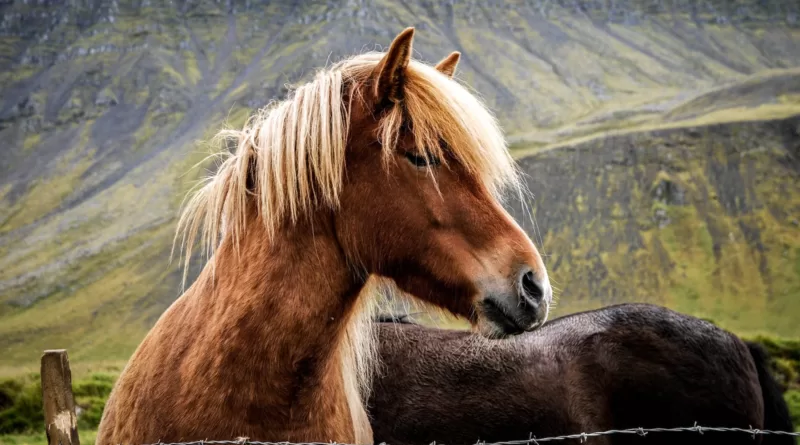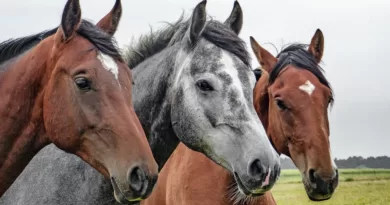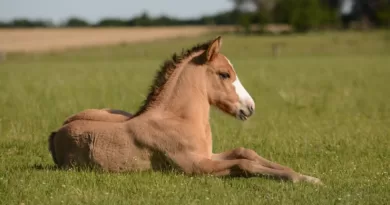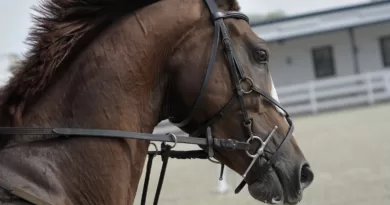How Much Space Does a Horse Need
Understanding the Importance of Adequate Space for Horses
Horses are magnificent creatures that require ample space to thrive and maintain their physical and mental well-being. It is crucial for horse owners and equestrians alike to understand the importance of providing adequate space for these majestic animals. Adequate space allows horses to move freely and engage in natural behaviors, such as grazing, socializing, and exercising. Without sufficient room to roam, horses may become stressed, bored, and prone to various health issues. It is therefore essential to prioritize the space requirements of horses, regardless of whether they are kept in a pasture, barn, or stable.
When horses are confined to a small area or overcrowded living conditions, their quality of life can be greatly compromised. Limited space restricts their ability to exhibit their natural behaviors, which can lead to behavioral problems and physical ailments. Horses that are unable to move freely may develop muscular and joint issues, and the lack of mental stimulation can result in anxiety and boredom. Additionally, a lack of adequate space can increase the risk of injuries and conflicts among horses, as they may constantly compete for limited resources and territory. Therefore, providing horses with sufficient space should be viewed as an essential component of responsible horse ownership, ensuring the overall well-being and happiness of these magnificent animals.
Factors to Consider When Determining Space Requirements for Horses
When determining space requirements for horses, several factors need to be considered to ensure their well-being and overall health. Firstly, it is important to take into account the size and breed of the horse. Larger breeds typically require more space to move around comfortably compared to smaller breeds. Additionally, active breeds that are known for their high energy levels may need more space to exercise and roam freely.
Another factor to consider is the number of horses that will be housed together. Horses are social animals and generally thrive in herds. It is recommended to provide enough space to allow for natural herd dynamics and minimize the risk of injuries caused by overcrowding. Depending on the number of horses, it may be necessary to provide multiple shelters and adequate pasture land to accommodate them.
Analyzing the Dimensions and Layout of a Horse’s Shelter
When analyzing the dimensions of a horse’s shelter, it is important to consider the size of the horse itself. The dimensions should be adequate to accommodate the horse comfortably, allowing it to stand, lie down, and move around freely without restrictions. The height of the shelter also plays a crucial role, as it should provide enough overhead clearance for the horse to raise its head without hitting the roof. Additionally, the layout of the shelter should be designed in a way that promotes good airflow and natural light, keeping the horse’s living environment fresh and well-illuminated.
Another aspect to consider when analyzing the dimensions and layout of a horse’s shelter is the addition of partitions. Dividing the shelter into separate areas can be beneficial, especially when housing multiple horses. It allows each horse to have its own space, reducing the risk of conflicts and ensuring a peaceful living environment. When designing the layout, it is essential to take into account the placement of the feed and water sources to make them easily accessible for the horses. Proper planning and attention to detail in the dimensions and layout of a horse’s shelter play a significant role in providing a comfortable and safe living environment for these magnificent animals.
The Role of Pasture Size and Quality in Providing Sufficient Space for Horses
Pasture size and quality play a crucial role in ensuring that horses have adequate space for their well-being. The size of the pasture directly impacts the amount of movement and exercise a horse can engage in. A small or overcrowded pasture restricts a horse’s ability to move freely, which can result in numerous physical and mental health issues.
Adequate pasture size allows horses to graze naturally, which promotes proper digestion and nutrition. It also enables them to engage in social interactions with other horses, fulfilling their natural herd instincts. Additionally, a well-maintained pasture with quality grasses ensures that horses have access to adequate forage, which is essential for their overall health. By providing a sufficient and well-managed pasture, horse owners can create an environment that not only meets the horses’ physical needs but also promotes their mental well-being.
How the Number of Horses Affects Space Requirements
One of the key factors to consider when determining space requirements for horses is the number of horses present. The number of horses directly affects the amount of space needed to accommodate their daily activities and overall well-being. As a general rule, each horse should have enough space to move around freely, exercise, and socialize without feeling cramped or restricted.
When multiple horses are housed together, it is crucial to provide adequate space to minimize the risk of injuries and conflicts. Horses are social animals that establish hierarchies within their herd, and insufficient space can lead to increased tension and aggression. Additionally, overcrowded conditions can result in decreased access to food, water, and shelter, which can negatively impact the horses’ health and overall quality of life. Therefore, when determining space requirements, it is essential to consider the number of horses and ensure that each individual has sufficient space to thrive.
Exploring the Impact of Exercise and Grazing on Space Needs for Horses
Exercise and grazing are two crucial activities for horses that directly impact their space needs. Horses require ample space for exercise to maintain their physical and mental well-being. Regular exercise helps to keep horses fit, strengthens their muscles, and improves their overall health. It also helps prevent boredom and destructive behaviors that can arise from being confined in a limited space. Horses are natural roamers and need sufficient space to move freely and engage in natural behaviors such as running, trotting, and playing.
In addition to exercise, grazing is an essential part of a horse’s diet and requires adequate space. Horses are herbivores and need access to fresh, nutritious grazing areas to meet their nutritional needs. Providing ample grazing space ensures that horses can access the grass and forage they require, allowing them to fulfill their natural feeding instincts. Adequate grazing space also helps prevent overgrazing, which can lead to soil erosion and reduced pasture quality. By allowing horses plenty of space for grazing, owners can ensure their horses have a balanced diet and maintain optimal health.
The Influence of Horse Breed and Size on Space Requirements
Different horse breeds and sizes can have varying space requirements to ensure their well-being and overall health. The breed and size of a horse play a significant role in determining the amount of space needed for them to move around comfortably. Larger horse breeds, such as drafts or warmbloods, generally require more space due to their size and bulk. On the other hand, smaller horse breeds, like ponies, may be content with less space but still require enough room to exercise and graze.
It is important to consider that different breeds and sizes often have different energy levels and exercise needs. Some larger breeds may have a higher level of energy and thus require more space for daily exercise. Conversely, smaller horse breeds may have lower energy levels and can be adequately exercised in a smaller area. Understanding the specific needs and characteristics of each breed and size is crucial in determining the appropriate amount of space required for their overall well-being.
Considering the Psychological Benefits of Ample Space for Horses
The provision of ample space for horses not only impacts their physical well-being but also their psychological health. Horses, by nature, are highly active and social animals. They require enough space to move around freely, engage in natural behaviors, and establish social hierarchies within their herds. When horses have access to adequate space, they are more likely to exhibit natural behaviors such as grazing, rolling, and interacting with other horses. This promotes mental stimulation and reduces the risk of behavioral problems that may arise from confinement or restricted movement.
Moreover, ample space allows horses to have a sense of security and control over their environment. When horses are provided with sufficient space, they have the opportunity to establish individual territories and retreat to safe areas whenever they feel the need. This sense of control and security can have a positive impact on their overall emotional well-being, reducing stress levels and promoting a more relaxed and contented demeanor. Additionally, having enough space allows horses to explore their surroundings, interact with various natural elements, and experience a sense of freedom that is essential for their psychological health.
Addressing Common Misconceptions About Horse Space Requirements
One common misconception about horse space requirements is that providing a small pasture and minimal turnout time is sufficient for their well-being. However, it is essential to understand that horses are naturally social animals that require ample space to interact and move freely. Restricting their movement and socialization can lead to increased stress, boredom, and may even result in health problems such as obesity and lameness.
Another misconception is the belief that a large shelter or barn is enough to compensate for a lack of turnout space. While providing a comfortable and safe shelter is vital, it should not be seen as a substitute for sufficient grazing and exercise areas. Horses need to graze on fresh pasture, both for their physical health and mental stimulation. Over time, confinement without access to grazing can lead to the development of vices such as cribbing or weaving, as horses seek ways to alleviate their boredom and frustration.
Practical Tips for Maximizing Space and Ensuring Horse Welfare
Maximizing space for horses is essential for ensuring their welfare. One practical tip is to regularly assess and optimize the layout of the horse’s living area. This involves evaluating the placement of structures such as shelters, water troughs, and feeders to maximize space efficiency. Additionally, removing any unnecessary obstacles or clutter can create more room for the horse to move around comfortably. By organizing the space effectively, horses can have more freedom of movement, reducing the risk of injury and promoting their overall well-being.
Another tip is to consider rotational grazing or using multiple pastures. Allowing horses access to different grazing areas not only provides them with fresh forage but also helps prevent overgrazing and soil erosion. By dividing available land into smaller sections, horses can be rotated between pastures, giving the vegetation time to regrow. This practice not only promotes sustainable land management but also ensures horses have adequate grazing opportunities. Furthermore, implementing a grazing schedule can help prevent the spread of parasites and minimize ground degradation, enhancing the horse’s overall health and welfare.
How much space do horses need?
Horses require adequate space to move freely and engage in natural behaviors. The exact space requirements depend on various factors such as the horse’s size, breed, exercise needs, and pasture quality.
What factors should be considered when determining space requirements for horses?
Factors such as the number of horses, shelter dimensions, pasture size and quality, exercise needs, and the breed and size of the horses should be taken into account when determining space requirements for horses.
How does the number of horses affect space requirements?
The more horses there are, the larger the space requirements. Horses need enough room to move around comfortably and establish social hierarchies without overcrowding or undue competition for resources.
How does exercise and grazing impact the space needs of horses?
Regular exercise is important for horses to maintain physical fitness and mental well-being. Adequate space allows horses to engage in natural movements and graze freely, promoting overall health and happiness.
Does the breed and size of horses affect their space requirements?
Yes, the breed and size of horses can influence their space requirements. Larger breeds generally require more space to move comfortably, while smaller breeds may have slightly lower space needs.
What are the psychological benefits of ample space for horses?
Ample space provides opportunities for horses to engage in natural behaviors, such as socializing, grazing, and play. This can reduce stress, prevent behavioral problems, and enhance their overall well-being.
What are some common misconceptions about horse space requirements?
One common misconception is that horses can thrive in small, confined spaces. In reality, horses need sufficient room to move, exercise, and socialize. Another misconception is that shelter alone is enough, but horses also require outdoor space to meet their natural needs.
How can space be maximized to ensure horse welfare?
To maximize space for horses, consider implementing efficient shelter designs, rotational grazing systems, and regular exercise routines. Providing adequate pasture maintenance and enrichment activities can also help optimize the available space for horse welfare.




